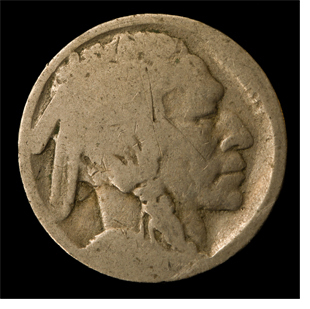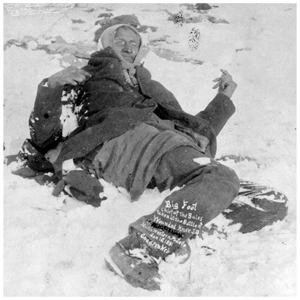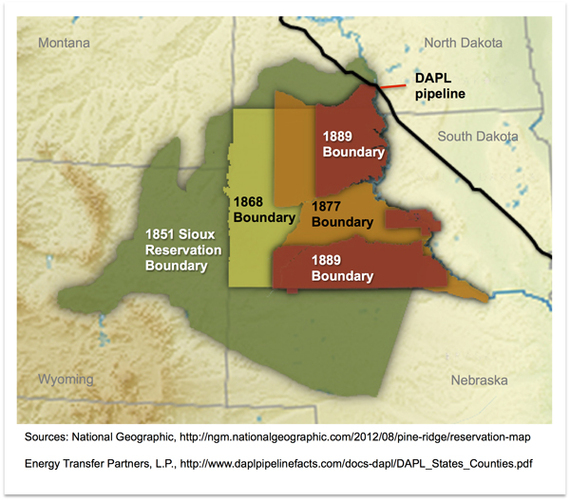 On December 20, 1890, an editorial was published in South Dakota's Saturday Pioneer on the occasion of the death of Sitting Bull at the hands of Standing Rock reservation police:
On December 20, 1890, an editorial was published in South Dakota's Saturday Pioneer on the occasion of the death of Sitting Bull at the hands of Standing Rock reservation police:
"The proud spirit of the original owners of these vast prairies inherited through centuries of fierce and bloody wars for their possession, lingered last in the bosom of Sitting Bull. With his fall the nobility of the Redskin is extinguished, and what few are left are a pack of whining curs who lick the hand that smites them. The Whites, by law of conquest, by justice of civilization, are masters of the American continent, and the best safety of the frontier settlements will be secured by the total annihilation of the few remaining Indians. Why not annihilation? Their glory has fled, their spirit broken, their manhood effaced; better that they die than live the miserable wretches that they are."
That call for genocide was written by a newspaper editor named L. Frank Baum, who would later go on to write a book titled The Wonderful World of Oz.
Nine days after the editorial was published, Baum nearly got his wish.
After Sitting Bull's death, his tribe fled, fearing for their lives. They were led by Sitting Bull's half-brother, Chief Spotted Elk, aka "Big Foot." The aging chief was dying from pneumonia in the brutal winter of 1890. His people were starving in the bitter cold. The buffalo, the tribe's primary food source, had been hunted to near extinction for sport by the whites. The food rations promised to them by the government as part of the 1877 "Sell or Starve" act had been denied.
The Sioux diaspora was intercepted by the army on December 28 and led to Wounded Knee Creek. The following morning, as soldiers collected rifles from the few remaining armed Sioux warriors, one of the tribesmen, "Black Coyote," who was deaf, did not understand the instructions. He struggled with the soldiers. A shot was fired.
The soldiers opened fire on the tribe with rifles and Hotchkiss gun light artillery. In 1890, the Hotchkiss gun was a weapon of mass destruction. The compact breach-loaded canon was capable of firing up to 50 grapeshot canisters per minute, shredding flesh and shattering bones with a spray of 1/2-inch lead balls shrieking through the air at 1,300 feet per second.
 In minutes, 300 Sioux men, women and children lay dead or dying on the frozen prairie. Before the bodies of the victims could be recovered for burial in a mass grave, a blizzard washed over the site. When the storm retreated, it revealed the grizzly remains of the massacre. Those tribespeople who had not died immediately from their wounds were frozen into icy contortions. Chief Spotted Elk's corpse was found on its back with frozen arms reaching up into the air. His head was elevated, as though he was attempting to rise from a fall at the moment he died.
In minutes, 300 Sioux men, women and children lay dead or dying on the frozen prairie. Before the bodies of the victims could be recovered for burial in a mass grave, a blizzard washed over the site. When the storm retreated, it revealed the grizzly remains of the massacre. Those tribespeople who had not died immediately from their wounds were frozen into icy contortions. Chief Spotted Elk's corpse was found on its back with frozen arms reaching up into the air. His head was elevated, as though he was attempting to rise from a fall at the moment he died.
25 Army soldiers received the Medal of Honor for acts of valor for their roles in the massacre.
The Sioux did not live and die on Standing Rock reservation by choice. Standing Rock was the bitter end of a long road of broken treaties with the U.S. government that had repeatedly kicked Native Americans out of places whites found valuable and onto places of increasing scarcity. In 1851, the Fort Laramie treaty granted the Sioux thousands of square miles that included South Dakota's Black Hills. After the Black Hills Expedition led by Lieutenant Colonel George Armstrong Custer confirmed the existence of gold in them thar hills in 1874, whites swarmed onto Sioux land. Skirmishes ensued. Custer himself was eventually killed in the Battle of Little Bighorn in 1876. 
Congress, outraged over the Sioux's temerity to defend their land from foreign invaders, passed the "Sell or Starve" act of 1877, forcing the Sioux off their verdant land in the Black Hills and onto Standing Rock - a place guaranteed to be worthless to human beings of any color - at least until the year 2016.
George Hearst set up his Homestake Mine, eventually extracting 40 million troy ounces of gold out of the Black Hills, with a current valuation of $53 billion. Gutzon Borglum would later carve the likenesses of four white American presidents into the sides of one of the Sioux hills.
In 1980, the U.S. Supreme Court found that the 1877 Act that resulted in the seizure of the Black Hills was a violation of the Fifth Amendment. The court awarded the Sioux Nation $106 million - 2/10ths of 1% of the value of the gold ore that was taken out of Hearst's mine alone.
The Sioux Nation refused the award. They want their land back.
In 2016, the Dakota Access Pipeline is being built on the very same land that the Supreme Court ruled was illegally taken from the Sioux in 1877.
Fear of murderous immigrant invaders drove many voters' decisions at the ballot box this election year. When looking at the potential dangers to life and property posed by immigrants through Native American eyes, it's much easier to appreciate white people's fears about outsiders.
No one understands the immigrant threat better than the Sioux.
